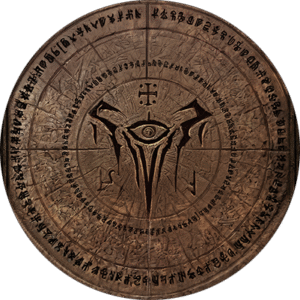The Tenebris Cataclysm
What We Know (And What We Still Fear)
By: Historical Liaison R. Mwangi
October 31, 2022 (Edited - November 03, 2022)
Halloween has often been a historically auspicious day. For this first year of our official revelation to the digital world, we believe it an appropriate time to bring light to the most important event of our Society, and perhaps the world.
Among those of us who study Netherwatch’s deeper archives, there is no phrase more frequently cited or more bitterly debated than the Tenebris Cataclysm. It is the cornerstone of our existence as an organization. It is also one of the greatest unknowns we still face.
We date the Cataclysm to the early 15th century, although no single document pinpoints a moment. Across disparate texts, however, we see the same recurring shift. Guidance from the Higher Host ceases. Patterns of celestial intervention stop. Relics that once shimmered go dormant. At nearly the same time, the majority of infernal entities vanish as well. Not all, of course. What remains has proven more volatile, more independent, and far more difficult to classify.
The world at large seemed untouched - no global records of a natural disaster, no alignment of world-ending signs. Yet in our records and in those few cultural remnants that escaped erasure, there is clear recognition that a fundamental connection between realms collapsed.
One favored theory within the Archives Division holds that the Cataclysm was not a violent event in the traditional sense, but a metaphysical collapse of structure. A severing between planes that had previously overlapped in quiet and unacknowledged ways. If true, this would explain the sudden disappearance of angelic intervention noted in dozens of pre-Cataclysm entries and the corresponding rise in unaffiliated infernal manifestations.

I often return to the phrasing found in The Selenic Requitals, an internal text we have only in fragments, believed to be translated from an older Akkadian root, which claims, “The mirror turned, and the watchers saw themselves.” Interpretations of that passage vary widely, but it remains one of the more poetic attempts to articulate a shift in cosmic attention (Levens, 1784).
Another widely studied source is the Codex Triginta, a compilation written shortly after the formation of Netherwatch. It refers to the Cataclysm as a “withdrawal in silence” and suggests that whatever forces once acted in our favor did so with the expectation of eventual separation. The most often quoted line reads, “When the vault was closed, it was not locked from without, but forged from within” (Daumer, 1547). Some have taken this to mean that the loss of divine influence was not abandonment but design, the "vault" being purely metaphysical.
There are more radical voices within the historical wing who believe that the Cataclysm was not an act of departure at all, but one of containment. That both celestial and infernal forces were pulled inward, removed from this world for reasons beyond our comprehension. Whether this was for our protection or theirs remains unclear.
Physical evidence is sparse, but not nonexistent. A stone tablet recovered from a site along the French coast bears six interlinked symbols. They do not match known ritual markings and seem to respond faintly to harmonic vibration. We have not yet determined if it is a product of the Cataclysm or a remnant of what came before.
The more we study, the more questions emerge. That is the nature of this work. Answers are slow and fragile. Curiosity, however, continues to be our sharpest tool.
—R. Mwangi
Historical Liaison, Netherwatch Archives
Works Referenced
Daumer, Henricus. Codex Triginta: Treatises on the Founding and Hidden Governance of the Watchers. Vienna: Librarium Sanctus, 1547.
Levens, O. J. The Selenic Requitals: Collected Translations from Forgotten Tongues. Netherwatch Archives Internal Manuscript, Transcribed 1784.
